Carl Livesay was a member of my HHS class of 1948 and was a person who went through both bad and good, as well as a terrible trial during his life. This story is to describe some of those things that happened in his young life, how horrible one particular thing he experienced was, and then how he changed his life to become someone admired by those who knew him. 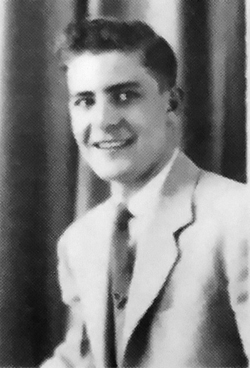 In high school, Carl was something of a trouble maker and sure couldn’t be described as among the more respected people in our class. I don’t recall how one particular school thing got started, but when were juniors and classes were organized in the fall, we jokingly elected him as the vice president of our class, and elected his best friend, whose behavior was even less admirable, as our president.
In high school, Carl was something of a trouble maker and sure couldn’t be described as among the more respected people in our class. I don’t recall how one particular school thing got started, but when were juniors and classes were organized in the fall, we jokingly elected him as the vice president of our class, and elected his best friend, whose behavior was even less admirable, as our president.
Given the responsibilities of the junior class in making all the arrangements for the annual Junior-Senior Banquet held near the end of the school year, which included raising the funds to pay for it, choosing its theme, and putting on the program, our choices would have proved to be a disaster if they were left to stand. But Principal E. A. Williamson saw to it that they weren’t. He insisted that we meet again and make choices which made sense. So things everything worked out and, Carl and his friend, were among us when we graduated in 1948.
Interestingly, in our 1948 yearbook, the friend listed president of the junior class among his activities, but Carl didn’t mention having been elected vice president.
Just over two years later, the North Koreans invaded South Korea, and Korean conflict (no war was ever declared) broke out. I didn’t know it at the time, but Carl enlisted in the U. S. Army. After major early setbacks, our army there was reinforced, and under General Douglass McArthur, chased the North Koreans all the way through North Korea to the Yalu River border with China. 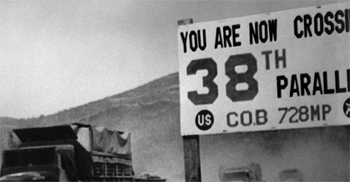 Suddenly, at the end of 1950, 600,000 Chinese Communists joined the North Koreans to attack us and push us back through North Korea to a place that meant the two Koreas were about where that had been before the conflict broke out. In the process, many, many Americans were taken prisoner.
Suddenly, at the end of 1950, 600,000 Chinese Communists joined the North Koreans to attack us and push us back through North Korea to a place that meant the two Koreas were about where that had been before the conflict broke out. In the process, many, many Americans were taken prisoner.
In early 1952, I saw a picture in the Tulsa World of four U. S. servicemen in heavy winter coats and caps with flaps over their ears. The wording under the picture gave their names and one was listed as Carl Livesay of Oklahoma City, but I recognized him as “our” Carl Livesay.
The picture was taken by an International Red Cross cameraman and published to falsely show the world that the North Koreans were treating their prisoners well to counter stories that they were being left poorly dressed in the freezing cold. I cut the picture out of the paper and put it in my billfold. From time to time, I would take it out, look at it and wonder how Carl was and if he was even still alive. I kept it many years, but apparently lost it at some point when I changed billfolds and forgot the move the picture to the new one. 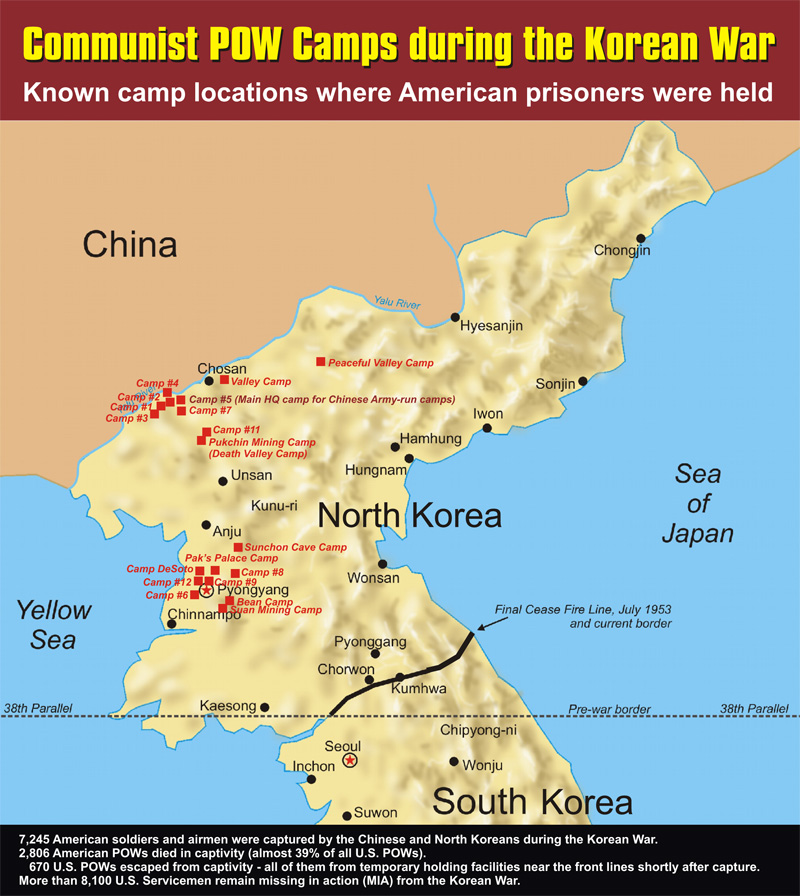 The Korean truce was signed in July 1953, by which time I, as a member of the U. S. army, had been stationed in southern Alabama for nearly a year. A prisoner exchange began immediately, and the names of Oklahomans released were published each day in the Tulsa World, which I took by mail. Each day, I checked to see if Carl’s name was included, and it wasn’t. Then, I learned that the North Koreans were releasing them in an order that meant those who had given them the least trouble while prisoners were being released earlier than those who had given them more trouble.
The Korean truce was signed in July 1953, by which time I, as a member of the U. S. army, had been stationed in southern Alabama for nearly a year. A prisoner exchange began immediately, and the names of Oklahomans released were published each day in the Tulsa World, which I took by mail. Each day, I checked to see if Carl’s name was included, and it wasn’t. Then, I learned that the North Koreans were releasing them in an order that meant those who had given them the least trouble while prisoners were being released earlier than those who had given them more trouble.
Remembering Carl, I figured it might take some time to see his name. While the exchange was going on, I went home to Henryetta on leave, and when I got there, I learned that on the last day prisoners had been released, Carl had been on the last release truck.
When my leave was nearing its end and it was time for me to make the trip back to my army base, I left my parent’s house on the south part of Henryetta to head out of town by turning east at the original location of the Henryetta Doughboy at Fourth and Main. But when I got to the Doughboy corner, there was a huge crowd of people and no way to get the car to the corner. I got out and asked what was going on and was told that a car with Carl in it would soon arrive from the Oklahoma City airport.
So I stayed there at the Doughboy and was among all the people who reached into the car to shake Carl’s hand and tell him “Welcome home.” I smiled and he said something like, “Thanks Buddy,” maybe calling me Buddy because I was wearing my uniform. Actually, I don’t think he recognized me – and given all he had been through, that wouldn’t be surprise me. 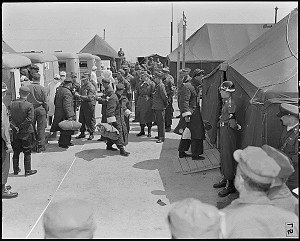 A few days later, the football season started and Carl was recognized as a sort of a guest of honor at the first game. Then, I think within a week, Carl and his high school best friend got into a serious fight with each other over the affections of Betty Meyers, who was a year behind us at HHS, so Carl’s behavior seemed to be as we remembered. Carl ended up marrying Betty.
A few days later, the football season started and Carl was recognized as a sort of a guest of honor at the first game. Then, I think within a week, Carl and his high school best friend got into a serious fight with each other over the affections of Betty Meyers, who was a year behind us at HHS, so Carl’s behavior seemed to be as we remembered. Carl ended up marrying Betty.
In 1958, my HHS class had its first reunion of any kind on a Saturday evening at the old Whiteway Café that was then located a door or two west of where it had stood earlier after the Patty Ann had taken its place on the northwest corner of 6th and Main. Carl didn’t attend though, because he had a bar a few doors west of the White Way and Saturday night was naturally the best business night he had each week. When we broke up the reunion at the White Way, several of us went to see Carl in his bar.
A year later, Oklahoma repealed its state constitutional provision that outlawed the sale of alcohol in 1959, as one of the last states to do so. Carl then gave up his bar and became the owner of a liquor distributorship based in Tulsa. That was the last I knew of Carl until plans were being made for our class’s 50th reunion that was held in Henryetta in 1998. At the time, I received a list of addresses of class members that had been sent to all of us in advance. It showed that Carl was living in Florida – I think at Pensacola, but it could have been some other town.
I called Carl and told him of the picture I had carried around for so many years. After expressing surprise that I had seen the picture and carried it for so many years, he told me that as soon as the picture was taken, the North Koreans had taken the warm clothing back and they were left to nearly freeze in their light clothes. Then I told him I had been at the Doughboy when he arrived back in Henryetta, and that he had given me a friendly handshake even though I didn’t think he recognized me.
Finally, I got around to telling him I had been checking the names of released prisoners each day and from doing that, I had learned that he was supposedly on the last truck load of prisoners to be released. At that point, he started talking. He said it wasn’t a truckload. He was the only person on it and was in fact, the last prisoner to be released. He went on to tell me the people in charge of the prison where he was located had held some kind of a trial where it had been ordered that he be sent to Siberia and that his name wasn’t even on the list of prisoners that had been furnished when the release started. But some International Red Cross people had found out about him and insisted that he be included among those to be released. 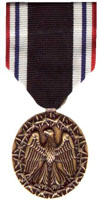 I called him several times trying to get him to come to the reunion, but he didn’t make it. In one of those conversations I told him I recalled his having a liquor distributorship in Tulsa, and wondered what it was what had taken him to Florida.
I called him several times trying to get him to come to the reunion, but he didn’t make it. In one of those conversations I told him I recalled his having a liquor distributorship in Tulsa, and wondered what it was what had taken him to Florida.
Carl surprised me again. It turned out that a time came when his beliefs took a turn and he started believing in God, and that he had gone back to school to became a minister. It seems to me that a church congregation whose minister has had the experiences Carl had would always recognize that their own personal trials were slight in comparisons to what they could have been. I don’t know how many times we talked after that, but when I called in 2008, I learned from his wife, Betty Meyers, that he had died March 8, 2008.
I hadn’t seen Carl since that day in 1953 when we shook hands near the old Doughboy monument, but I have had strong memories about his trials as a prisoner in Korea and very good thoughts of his change to become a minister. I am proud to have had the privilege of knowing him.
Carl died March 30, 2009. Here is his obituary:
Rev. Carl E. Livesay, age 77, died March 30, 2008. Born and educated in Henryetta, he enlisted in the U.S. Army in 1948. Sgt. Livesay was captured April 25, 1951 in North Korea where he remained a POW until his release September 1953. After returning home to Oklahoma, he married Betty Lou Prewitt February 17, 1954 and worked in the wholesale and retail liquor business 13 years.
Converted at First Pentecostal Church in Pensacola, FL in 1968, he was ordained into the ministry by United Pentecostal Church International in 1973. He evangelized with Rev. D. L. Welch 5 years, serving as Vice President of The D.L. Welch Bible Academy of Theology on Tape 1971 - 1972. He became pastor of the First United Pentecostal Church in DeFuniak Springs fall of 1972 and pastored 28 years until Fall 2000. During his 28 year pastorate he served as Presbyter of the Florida District UPCI from 1975-1982; served as Secretary and Treasurer of Florida District UPCI 1982 - 1987. After retiring in 2001, he faithfully attended First Pentecostal Church in Pensacola, FL until his death.
Survivors include his beloved and devoted wife of 54 years, Betty; three daughters, Marcia (James) Whigham, Carla (Tim) Martin, and Rhonda (Clayton) Adkinson, four grandchildren, three great grandchildren, one brother, and two sisters.
Before his death, Bro. Livesay requested only graveside rites at Barrancas Cemetary, officiated by Pastor Brian Kinsey. The service will be at 2:00 p.m. Tuesday, April 1, 2008.
Operation Big Switch – National Archives
Operation Big Switch was the Repatriation of POWs from North Korea and China. It went from August – December 1953. “Big Switch” was the largest and final exchange of prisoners, with 4,700 United States POWs returned to US control in a one month period from August 5, 1953 to September 6, 1953.
Publisher's Note: After some research, it was discovered Livesay had been sent to Camp 1, also called Changsong on the Yalu River.
For more about the Korean War, CLICK HERE.
















